You must log in or register to do the quizzes, complete the course and receive a certificate.
3.1. The environmental benefits of regenerative farming
Which phenomena are the images related to?

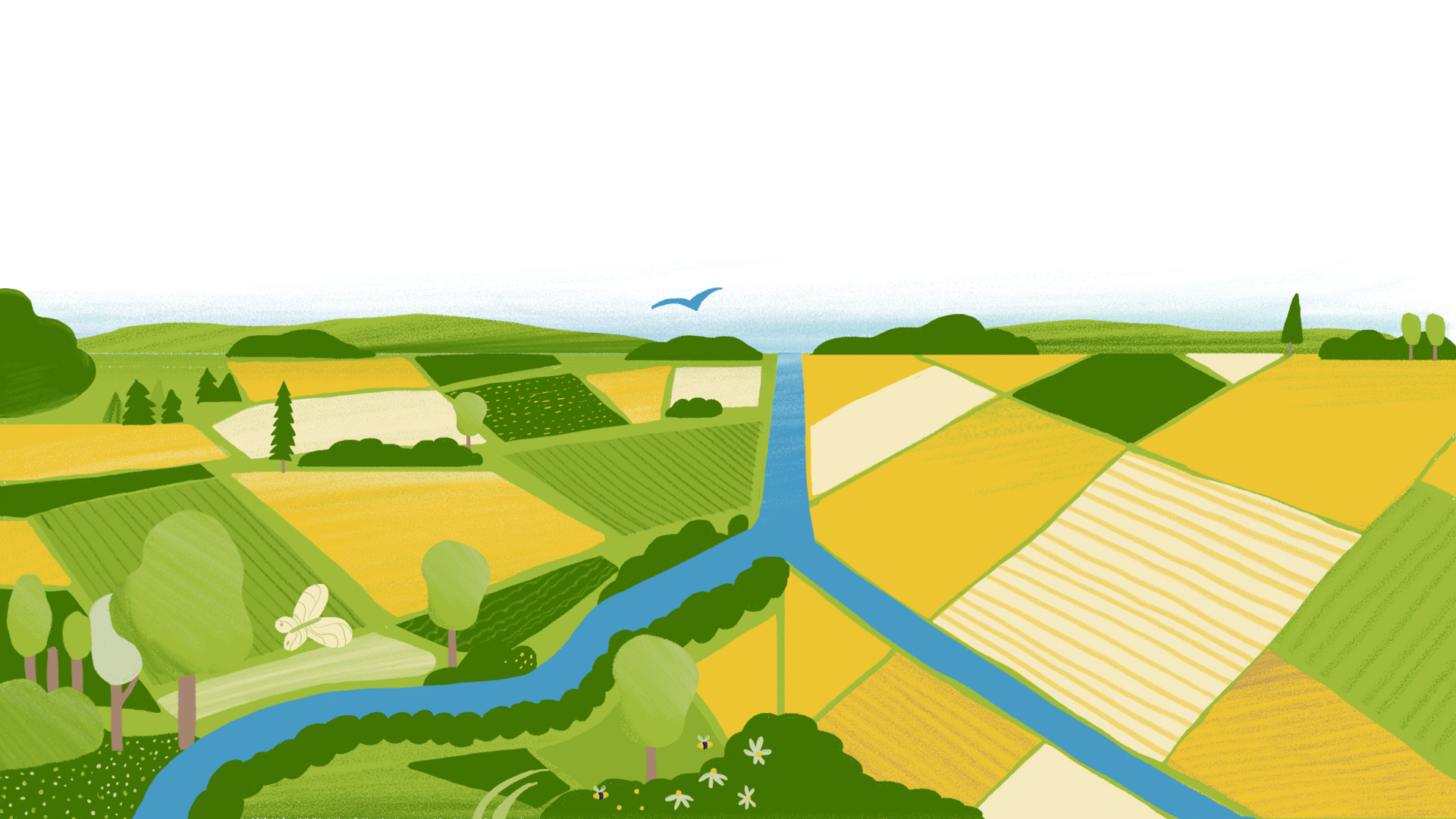

The phenomenon in the first picture is the result of climate change. The second picture is related to nature loss. The third picture shows a eutrophic body of water. Anyone who is familiar with the consequences of these phenomena will be concerned about whether we are leaving a viable planet for future generations. The good news is that food production can have a positive impact on all of these phenomena.
Most likely everyone has heard at least something of climate change, nature loss and the eutrophication of waterways. But let’s still run through what these phenomena are, what harm they do, and how they relate to agriculture.
Climate Change

What is climate change?
Read or listen
The atmosphere acts like the roof of a greenhouse. It allows some of the sun’s radiation through while preventing some of the heat radiated back from the Earth’s surface from returning to space. The resulting greenhouse effect warms the Earth’s crust and climate. Earth’s natural greenhouse effect keeps the planet at a favourable temperature and is therefore necessary for life. However, human activity has accelerated the greenhouse effect, and more greenhouse gases remain in the atmosphere. This raises temperatures and changes the Earth’s natural processes.
If current trends continue, global warming is likely to exceed the critical 1.5-degree limit already between 2030 and 2052. The direct impacts of climate change include an increase in extreme weather phenomena, such as heatwaves, droughts, and heavy rainfall. These phenomena can endanger drinking water and food production, and cause an increase in infectious diseases.
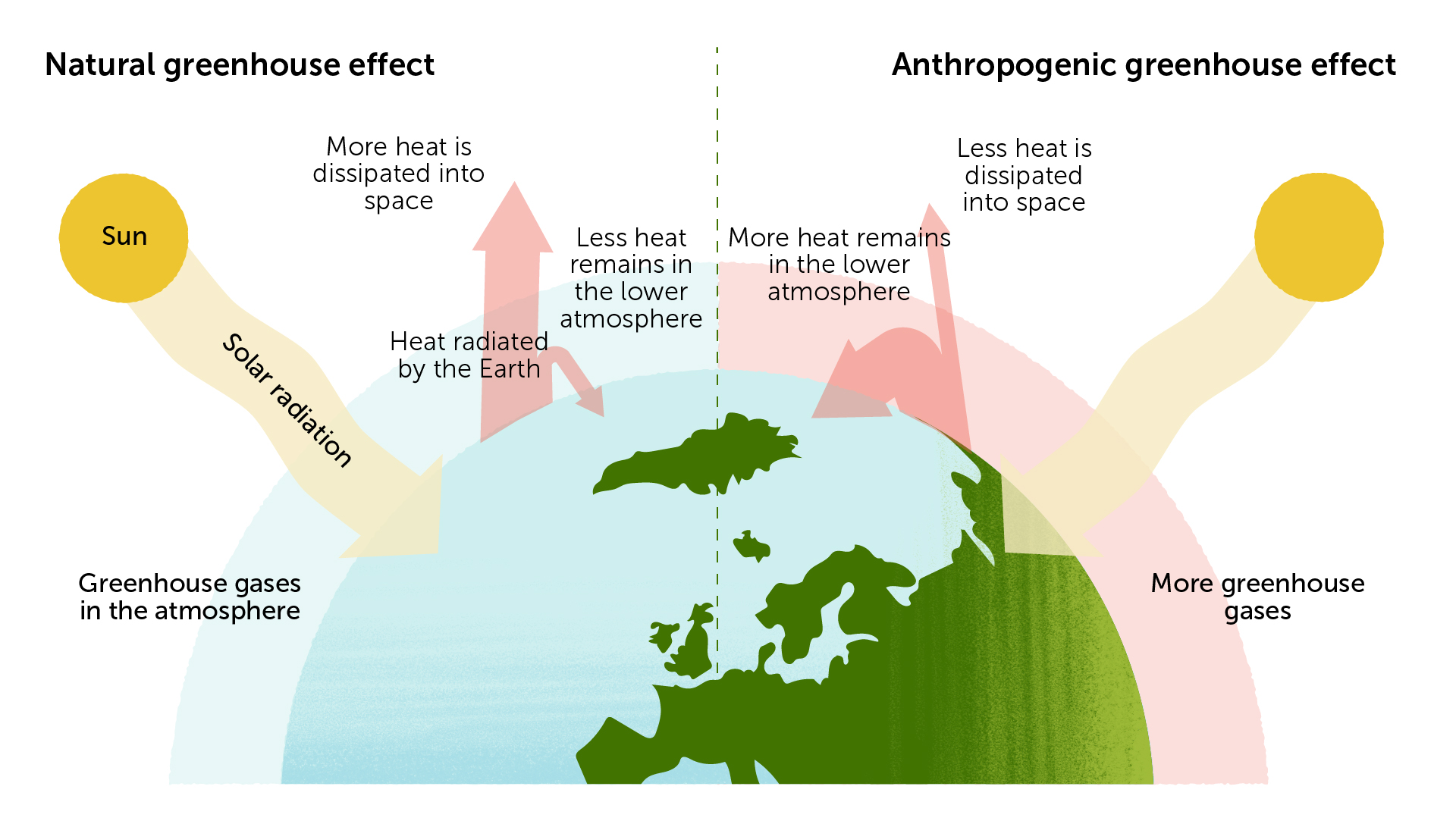
How can regenerative farming help?
Read or listen
Arable land is currently a source of carbon dioxide emissions. Cultivated mineral soil emits more carbon into the atmosphere than the ground can sequester. Regenerative farming increases photosynthesis and improves soil microbiota. Plants sequester carbon in the soil through photosynthesis. Yet the soil’s active and diverse microbiota are even more efficient at sequestering carbon. Regenerative farming can reverse the carbon cycle in fields and transform the soil from a source of emissions into a carbon sink.
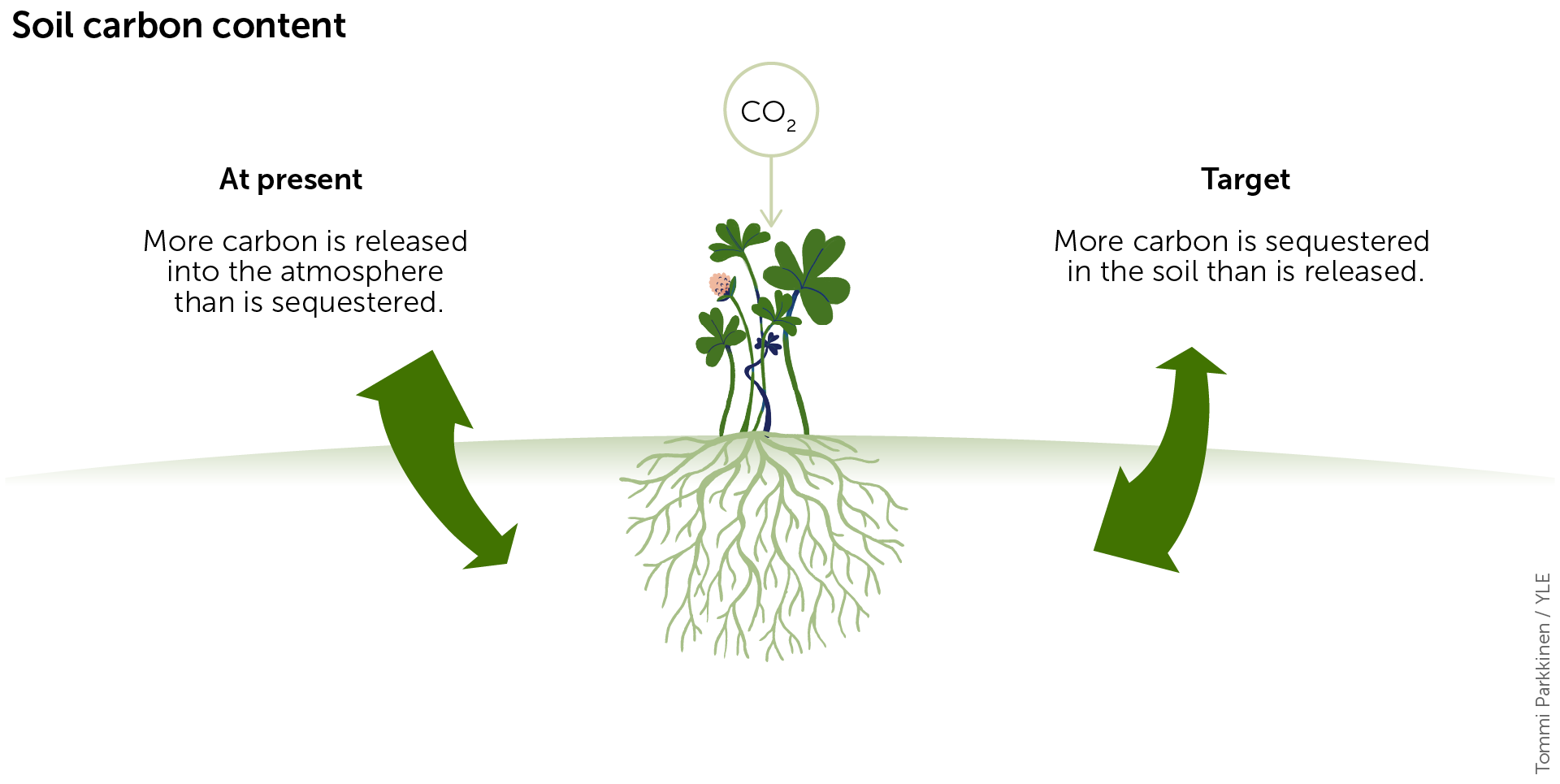
Research shows that, in many fields, more carbon escapes from the soil into the atmosphere than is stored in the soil.
Watch the video to learn how Jari Liski, Chief Scientist at the Finnish Meteorological Institute, views regenerative farming can help us to combat climate change.
Biodiversity loss

What is biodiversity loss?
Read or listen
Biodiversity loss refers to both the weakening of populations, i.e. the decrease in the numbers of individuals of a species, and the disappearance of entire species, that is, extinction. Biodiversity loss is caused by the deterioration or loss of habitats for plants, animals, and other organisms. Human-induced biodiversity loss has increased considerably in recent years – we are now talking about the sixth mass extinction. It is caused by pollution and the overconsumption of natural resources, overhunting and overfishing, and the impacts of climate change.
All organisms have a role to play in nature. These interconnected groups of organisms form ecosystems. Humans – like all life on Earth – depend on the ecosystem services they provide. For example, they supply us with drinking water, breathable air, and nutrition. If species disappear, we cannot predict how the system will function. The absence of even one seemingly insignificant species may have unpredictable impacts. Take the food web, for example. If the living conditions of one organism are endangered, the entire web may function poorly.
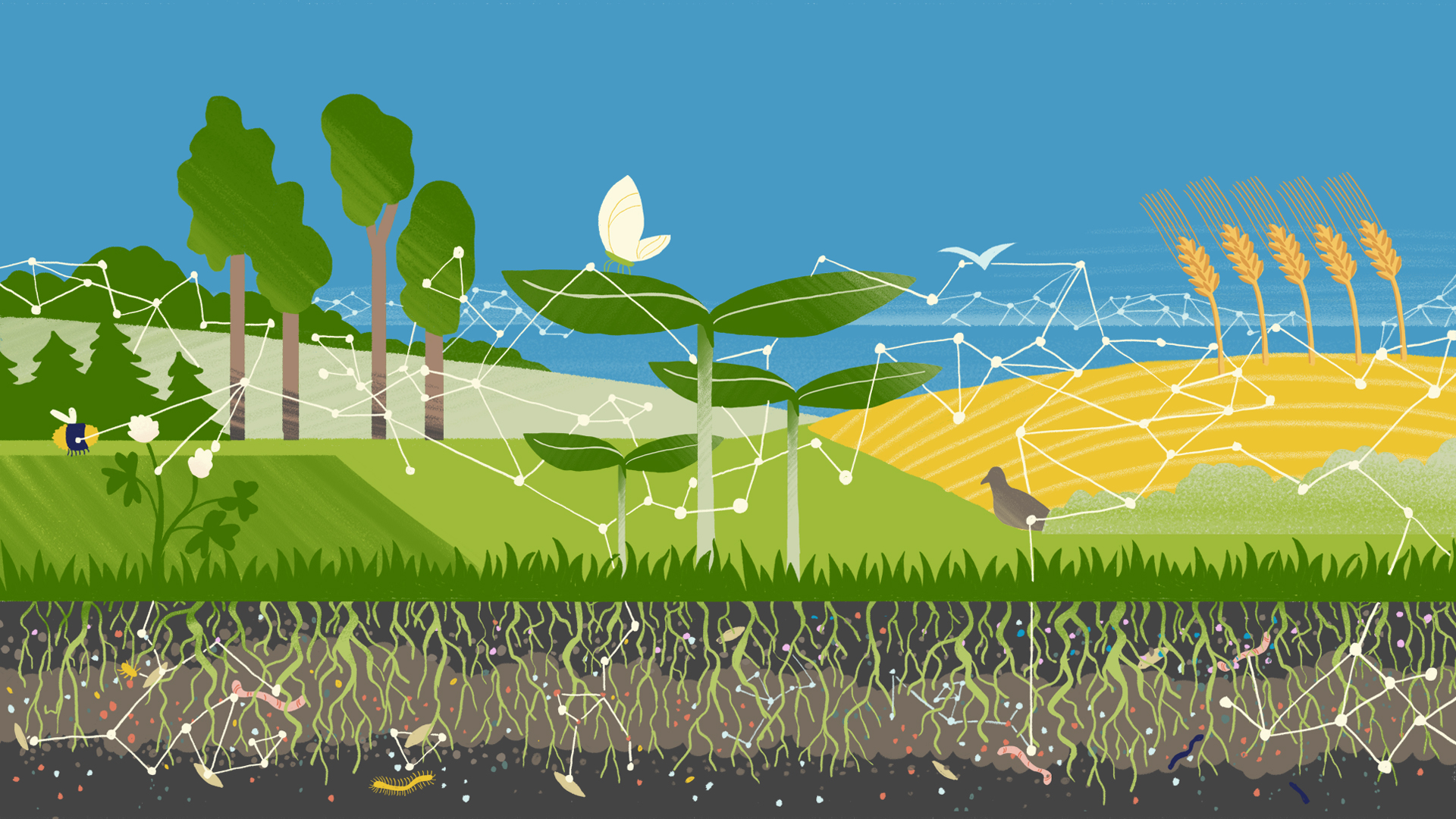
How can regenerative farming help?
Read or listen
Therefore, a healthy soil food web requires all its subterranean members from isopods to nematodes, all the way to the smallest protozoa. Healthy soil is diverse in terms of its organisms, and regenerative farming maintains this diversity. Soil diversity promotes the diversity of the surrounding natural environment. Regenerative farming also supports biodiversity in field environments and aims to increase the number of animal species in and around fields.
The partridge is considered an indicator of an agricultural environment’s diversity. Partridges used to be found in large numbers, but their populations have fallen due to changes in arable land. Partridges are now classified as a near-threatened species. Regenerative farming activities, such as year-round vegetative cover and diverse crop rotation, are likely to revive partridge populations.
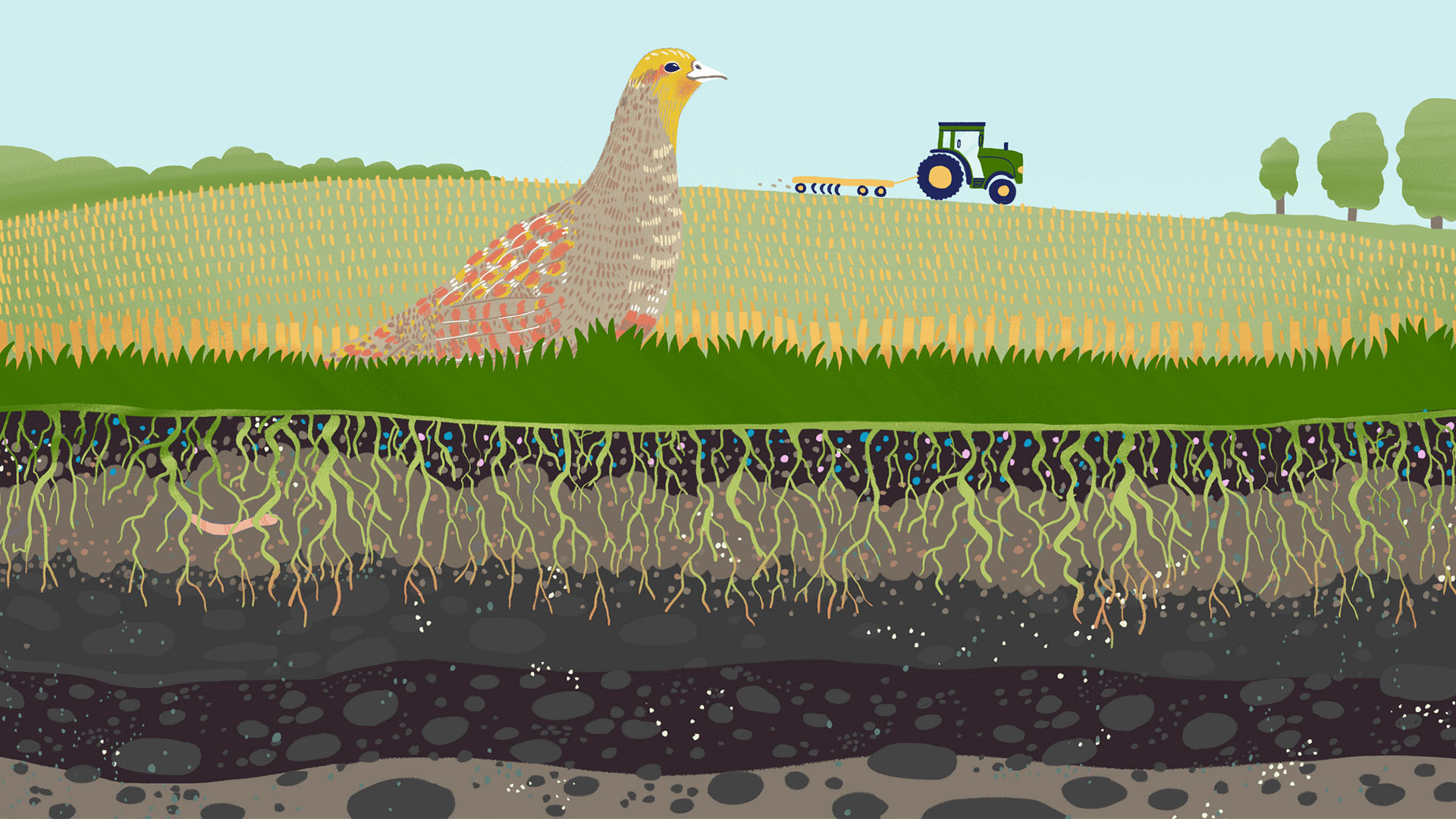
Why are pollinators indispensable?
People have attempted to quantify the importance of the ecosystem services provided free of charge by nature by estimating their worth in monetary terms. Examples of ecosystem services that enable farming include photosynthesis, soil formation and pollination. For example, some calculations have estimated the work carried out by pollinators to be worth EUR 426 billion per year. These estimates are, however, only theoretical. Most ecosystem services – such as the work done by pollinators – cannot actually be bought with money.
Three-quarters of the world’s crops require, or at least benefit from, pollinators. Domesticated bees perform only part of the work involved in pollination, and wild pollinators are essential. The work carried out by the most important wild pollinators, wild bees, is estimated to be of equal value to that of domesticated bees.
The number of pollinators has decreased significantly in recent years, notably in Europe and North America. Albert Einstein allegedly said that humanity would have a four-year life expectancy if pollinators disappeared.
Scenarios like this have made us wonder whether we could replace the work done by the pollinators. If people grabbed a brush and did the insects’ work, one person could pollinate the flowers of about 5–10 fruit trees per day. Some have hinted that technology could be the solution. However, we cannot rely on robot bees as pollinators – and we can only guess at the environmental impact of such pollinator robots. So it seems that the most affordable – or indeed, the only – option is to make sure that nature can continue to provide us with its pollinating services.
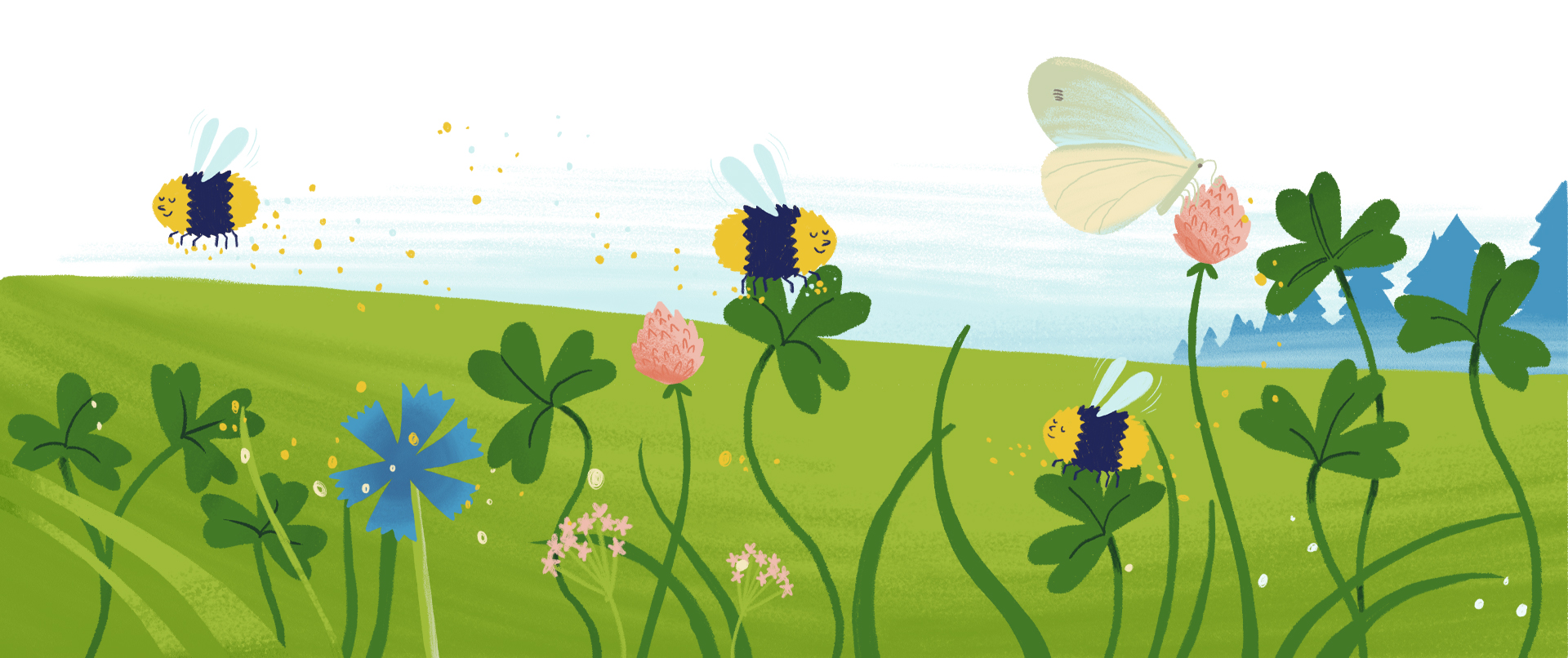
The eutrophication of waterways

What does eutrophication mean?
Read or listen
Eutrophication refers to an increase in the amount of organic matter in water bodies. When nutrients such as nitrogen and phosphorus leaches into water bodies, algae, for example, become more abundant. Beaches may become overgrown, and phytoplankton levels increase. This causes oxygen depletion and weakens the balance of the aquatic ecosystem. The water body can no longer provide nutrition and habitats for many of its living organisms.
Although a few species, such as blue-green algae and cyprinid fish, thrive in eutrophic waters, most species lose their living conditions. Eutrophication poses a threat to the biodiversity of water bodies. It also hinders water traffic and the recreational use of water bodies.
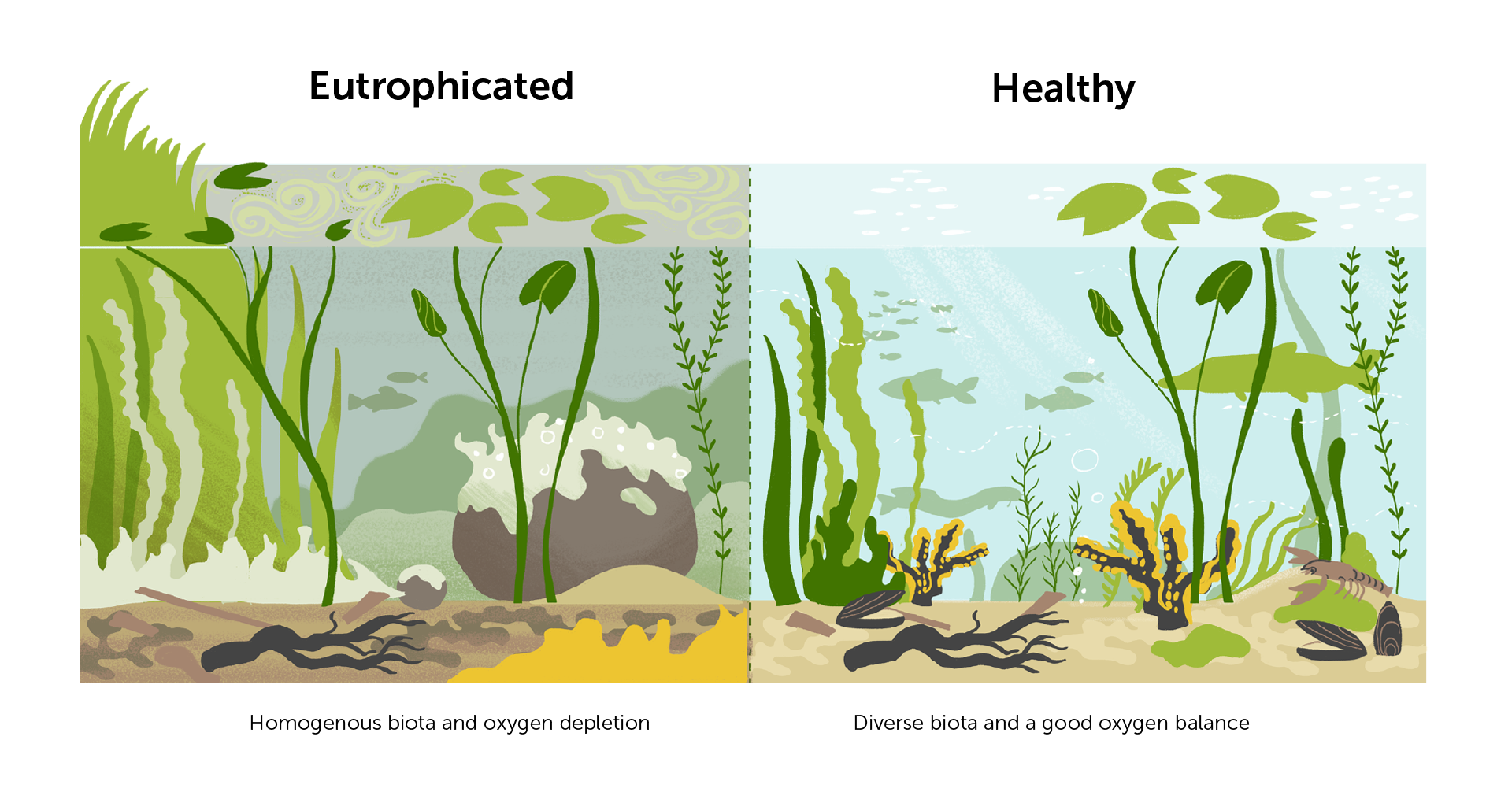
How can regenerative farming help?
Read or listen
Agriculture is one of the causes of eutrophication in water bodies. Many regenerative farming activities can reduce the risk of eutrophication. For example, good soil structure and abundant vegetative cover in fields reduces soil erosion, decreasing the amount of solids and nutrients that leach into waterways.
Well-structured soil works like a sponge. It’s good at retaining water, which prevents water from washing nutrients into water bodies. Regenerative farming aims to improve soil health, reducing the need for external fertilisers and pesticides.

How water management impacts arable land: the field on the left is in poor condition, while the field on the right is in good condition. Healthy soil has a high capacity for water retention, while an unhealthy field suffers from surface runoff and phosphorus (P) leaching, and also has a higher level of subsurface drain flow.
Source: Tuomas Mattila, 2023, Cover crops and soil loosening are key components for managing P and C stocks in agricultural soils
Now recap what you have learnt and move on to the exercise below.